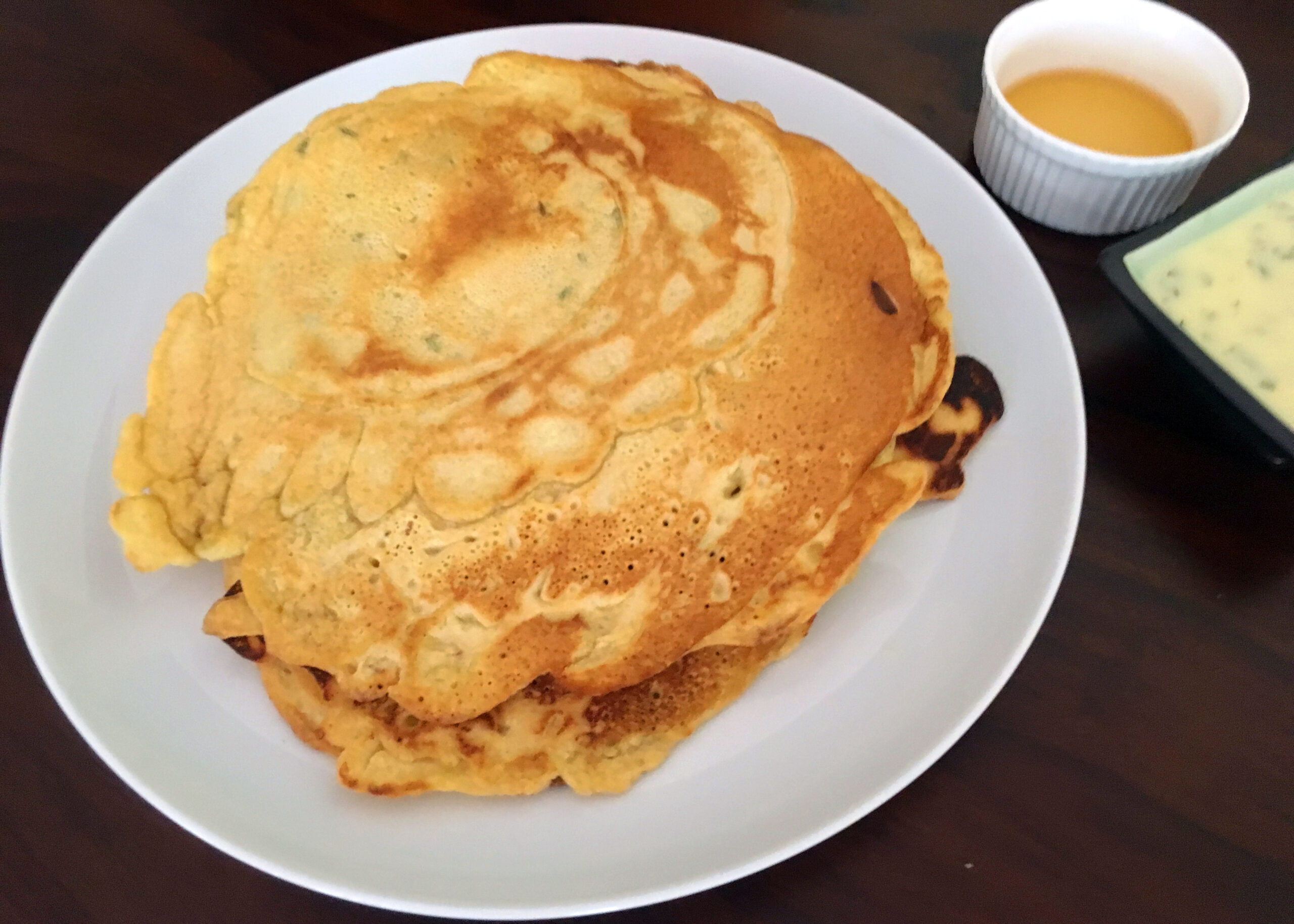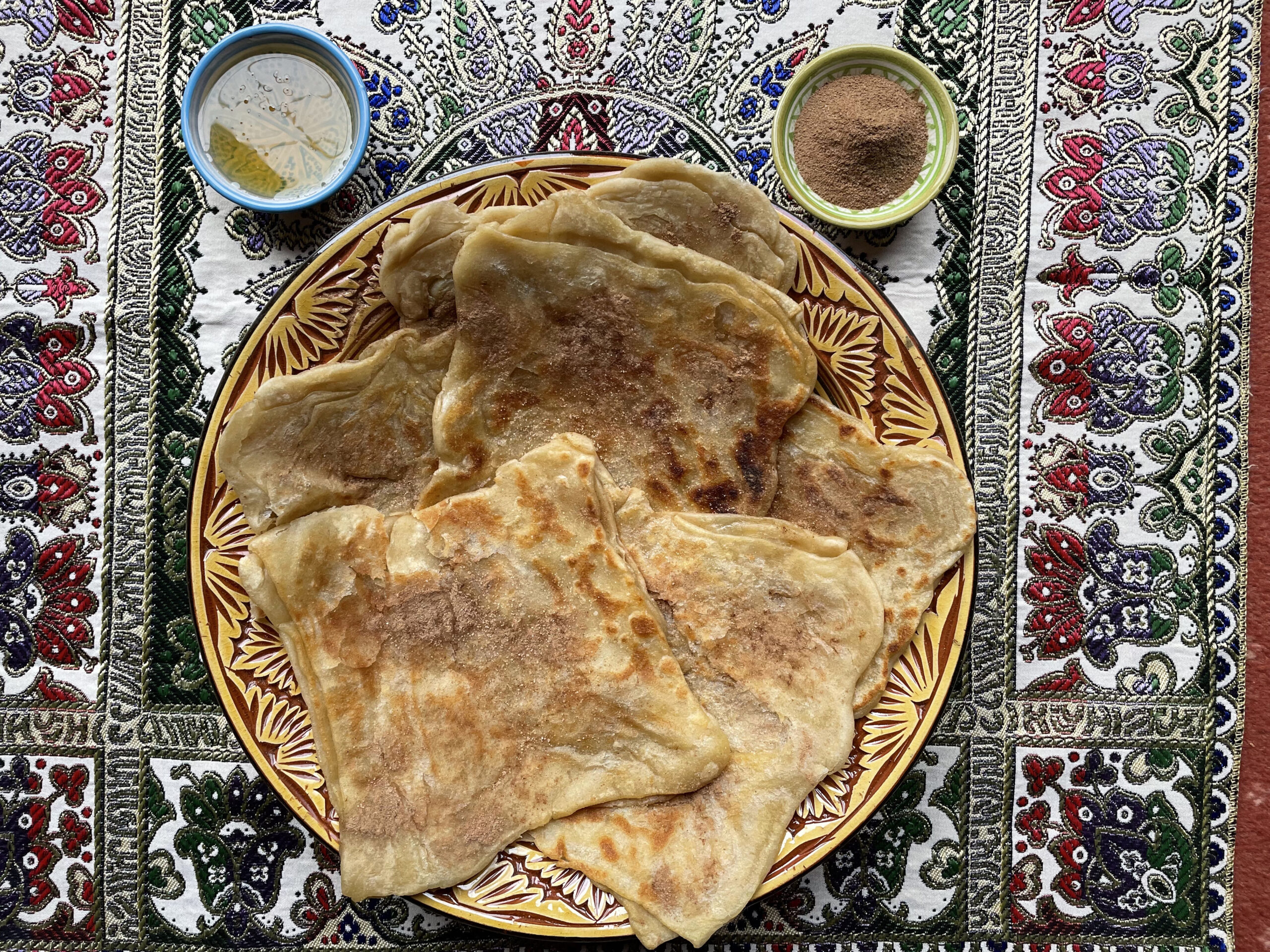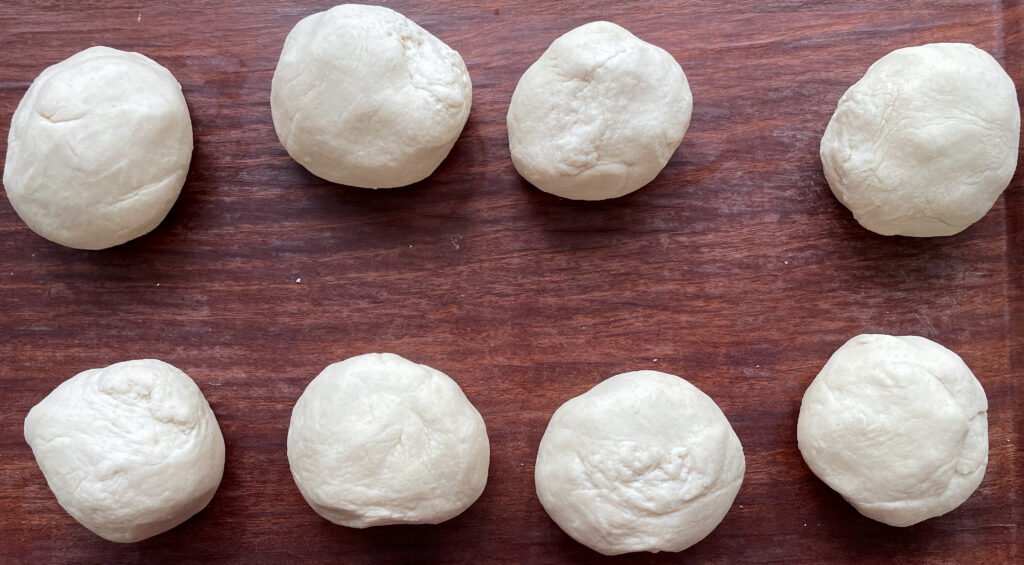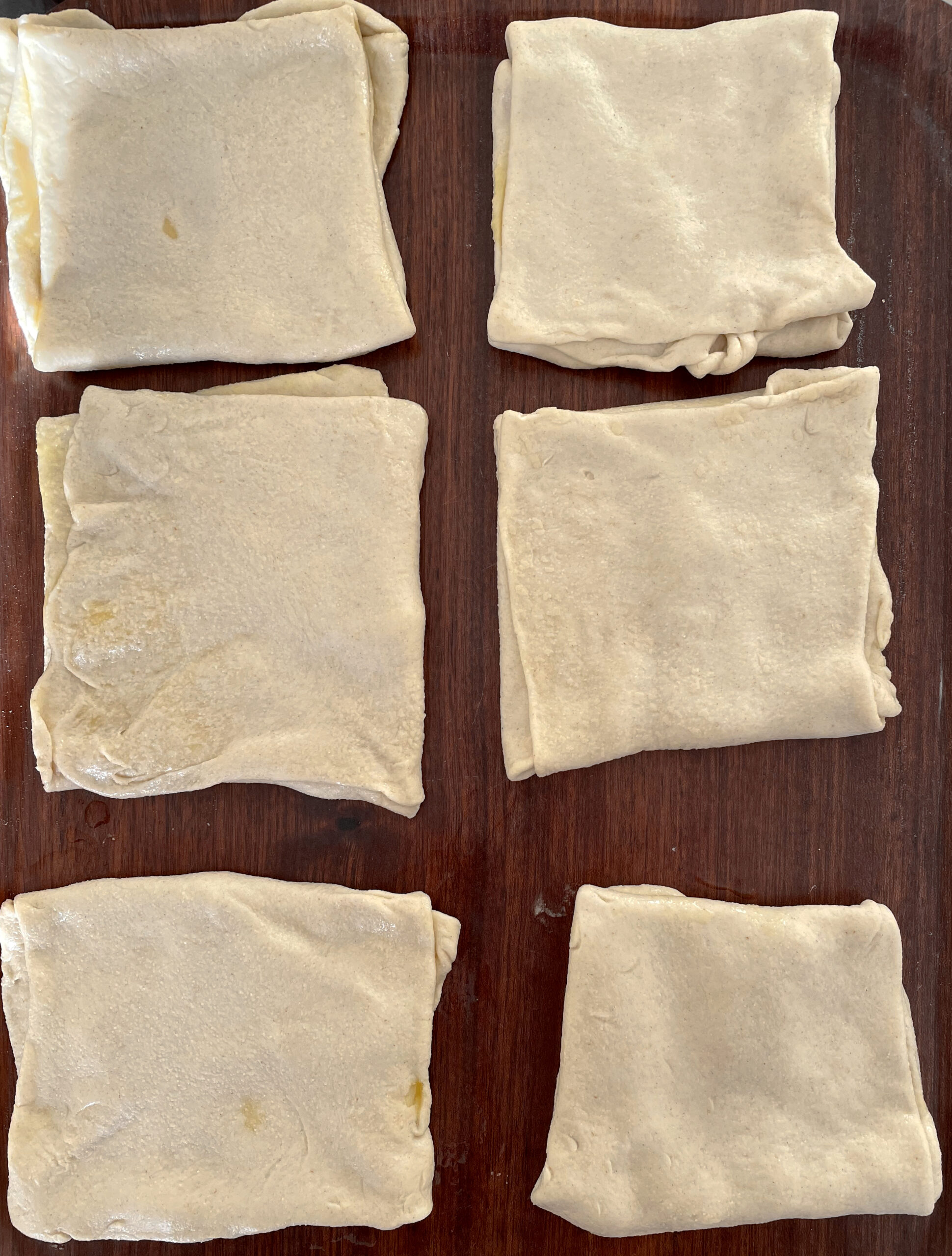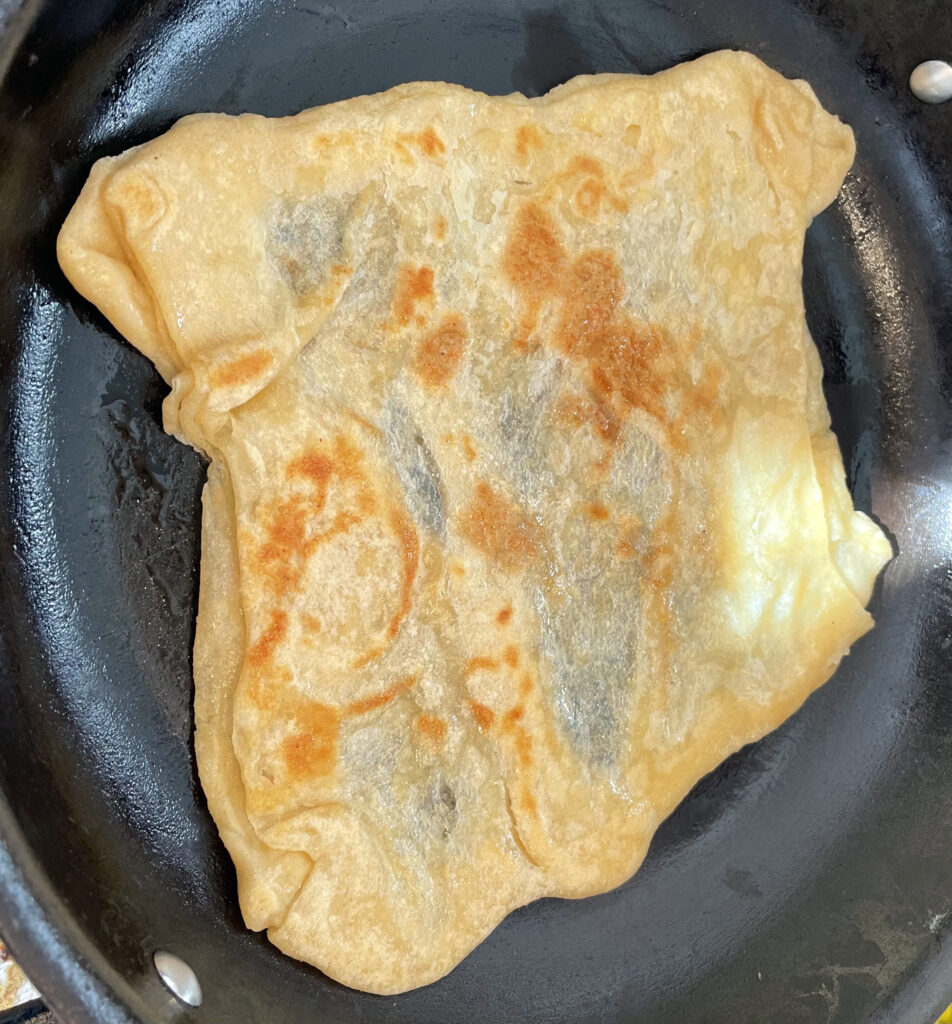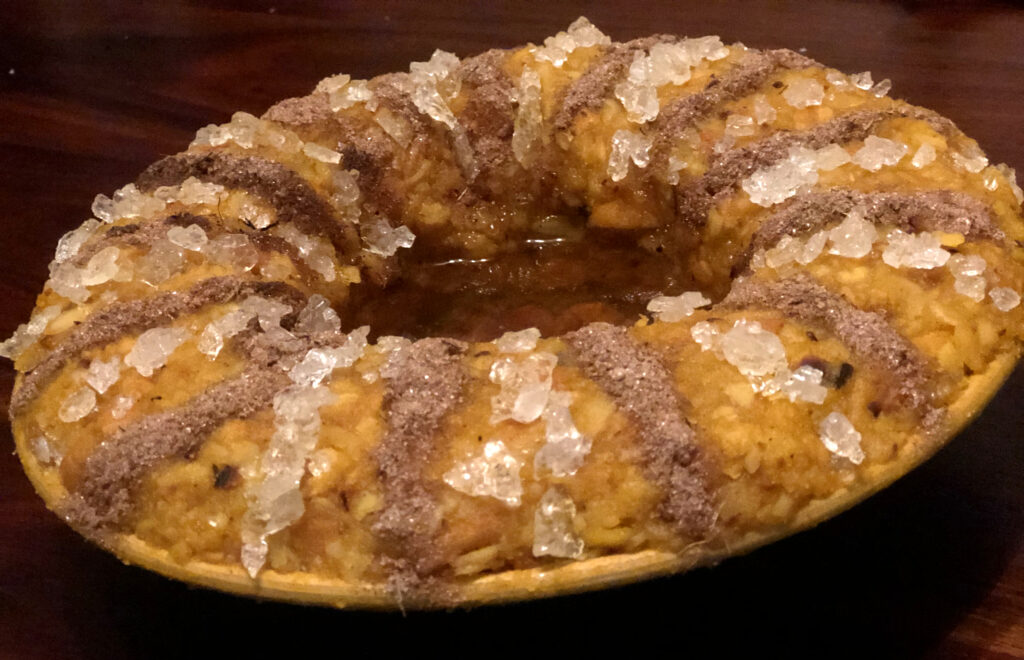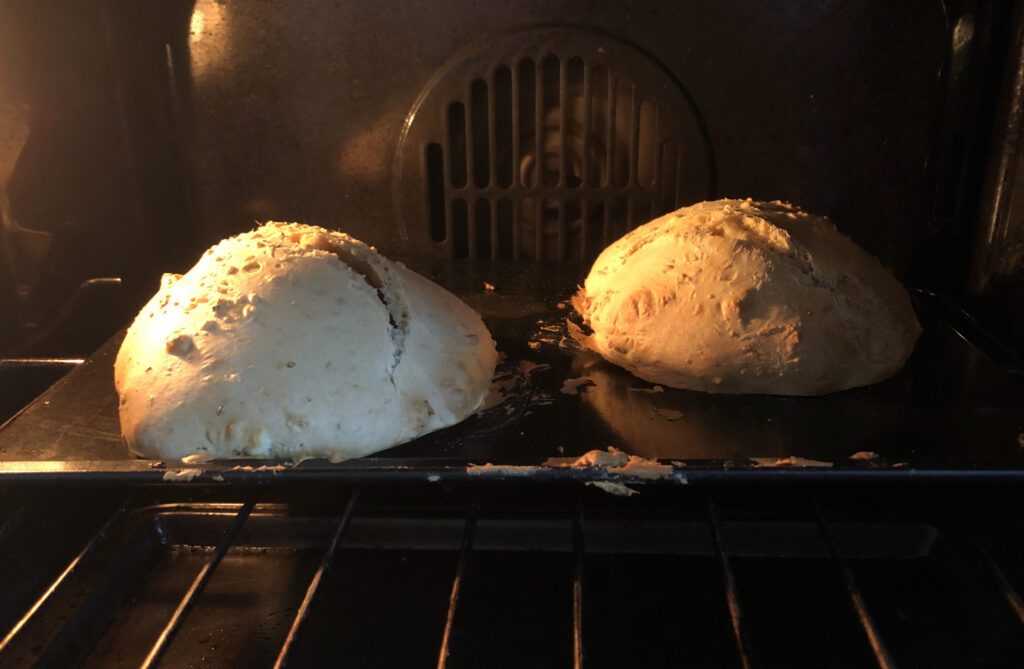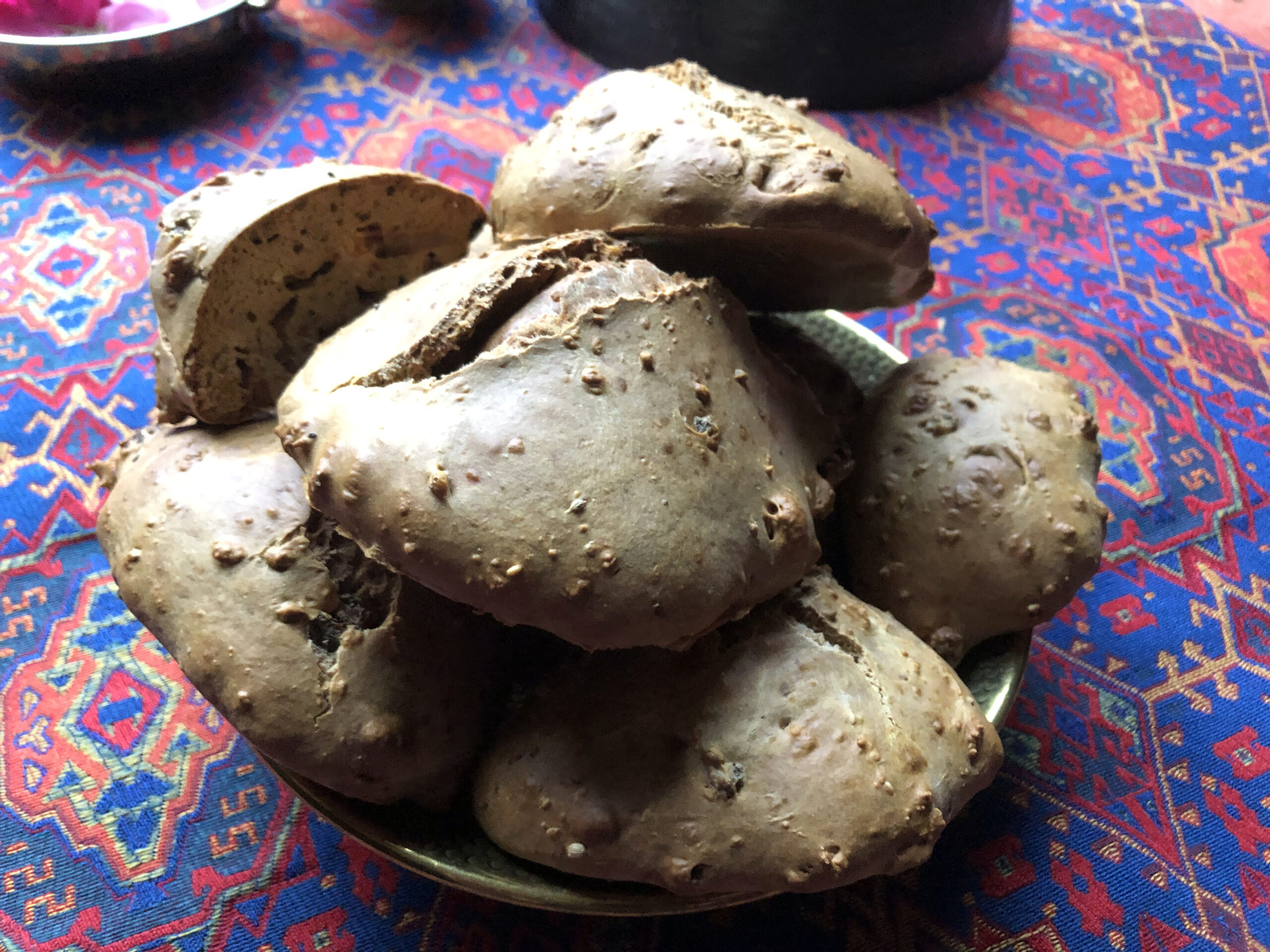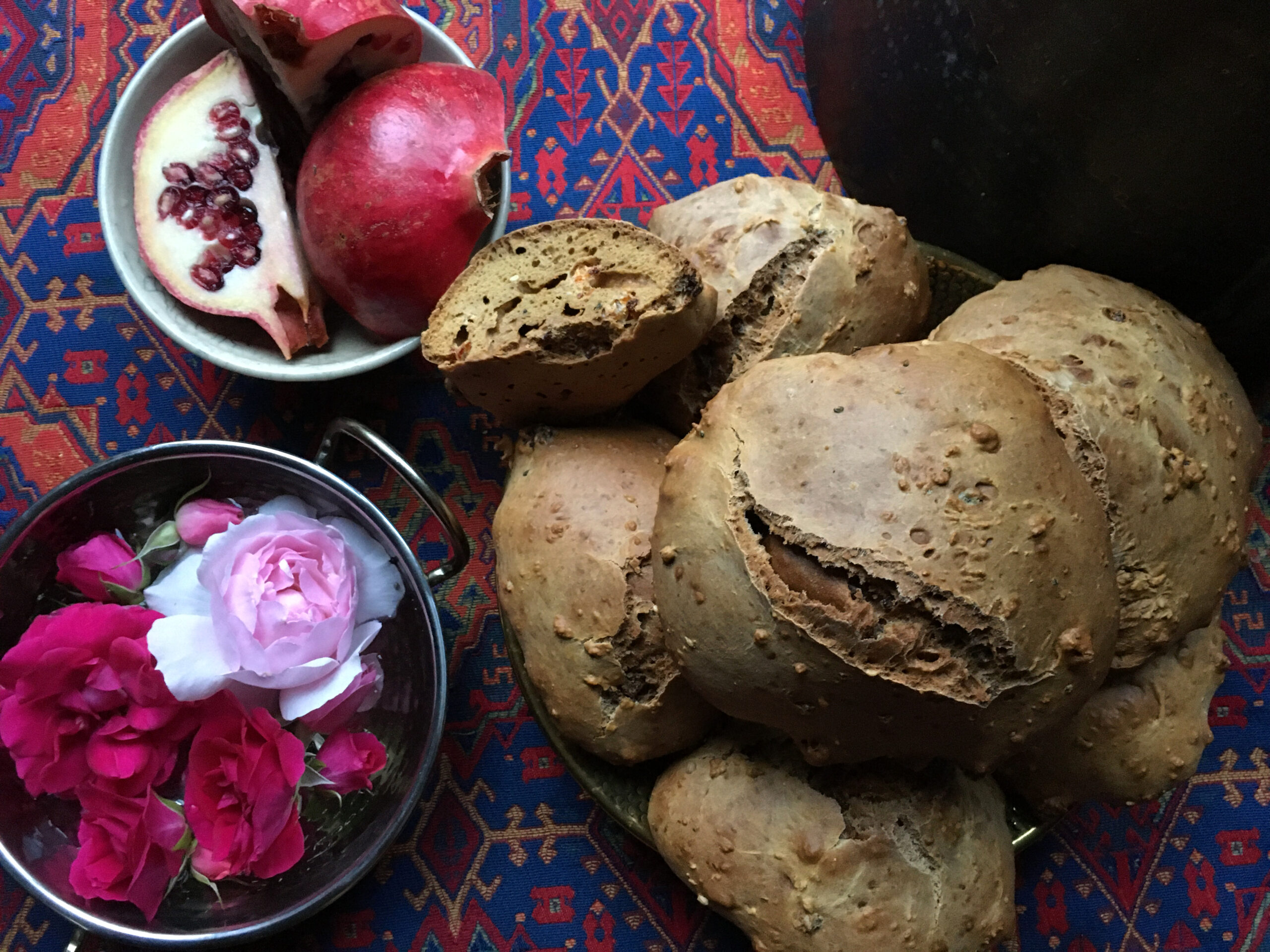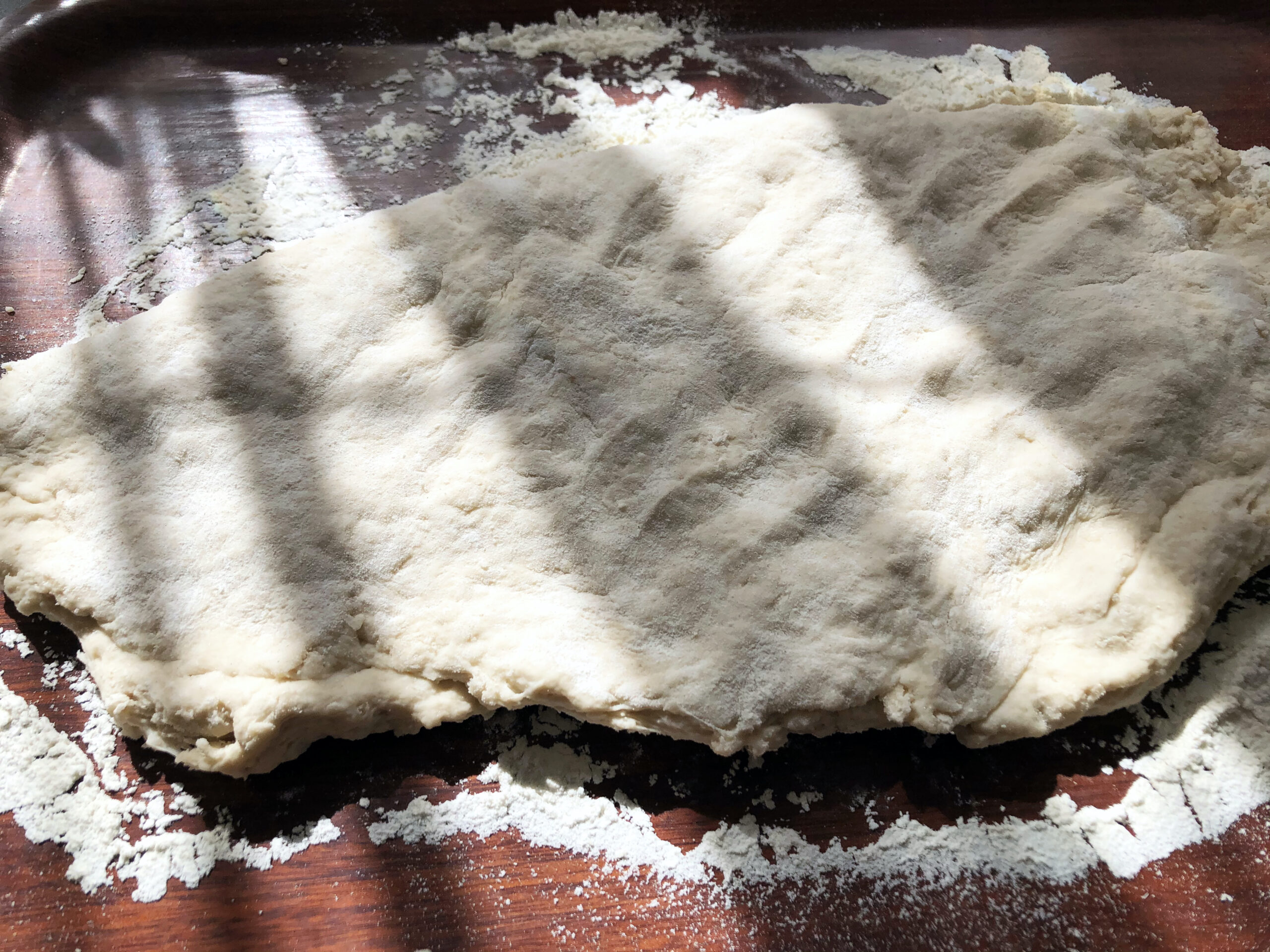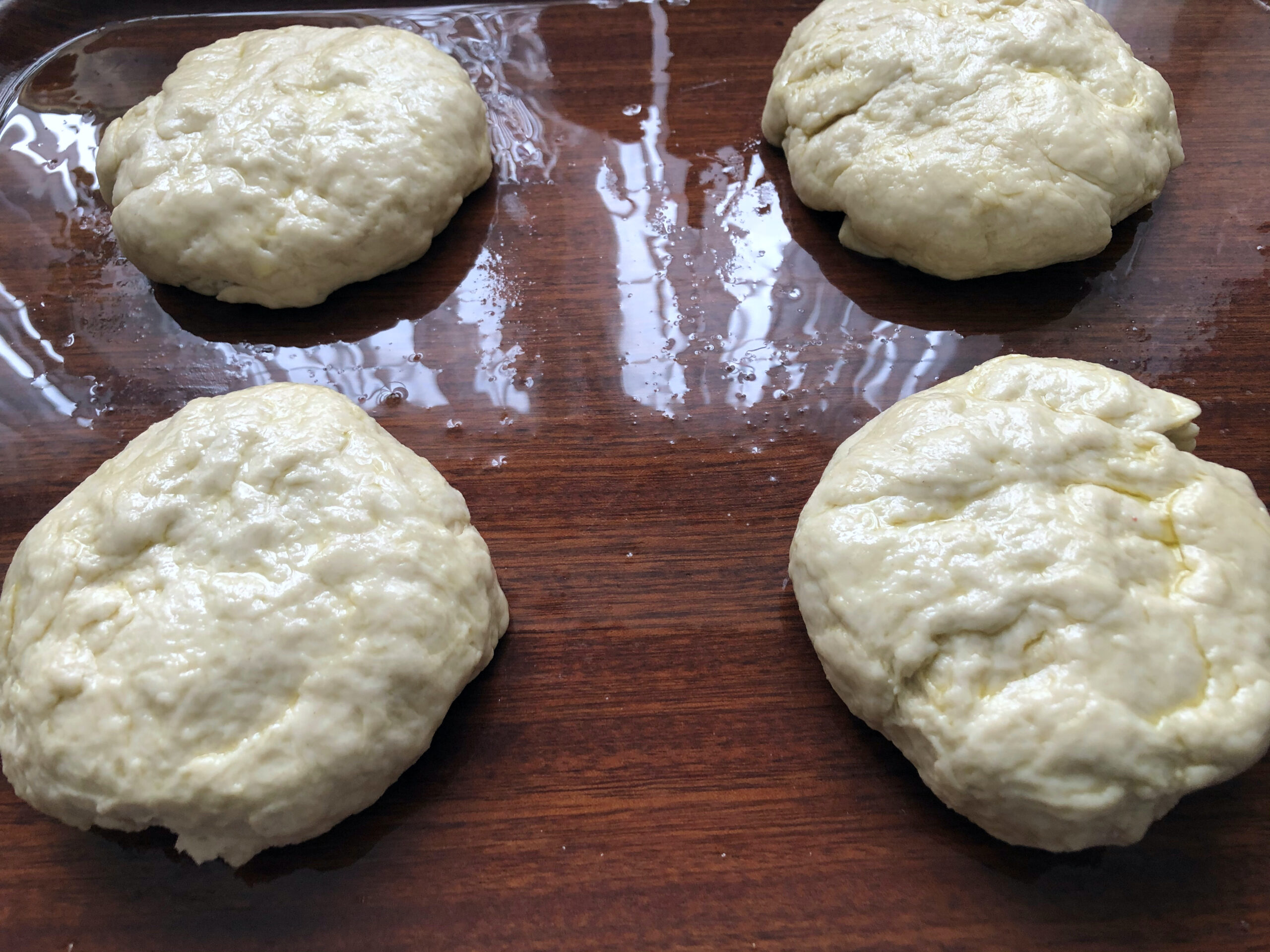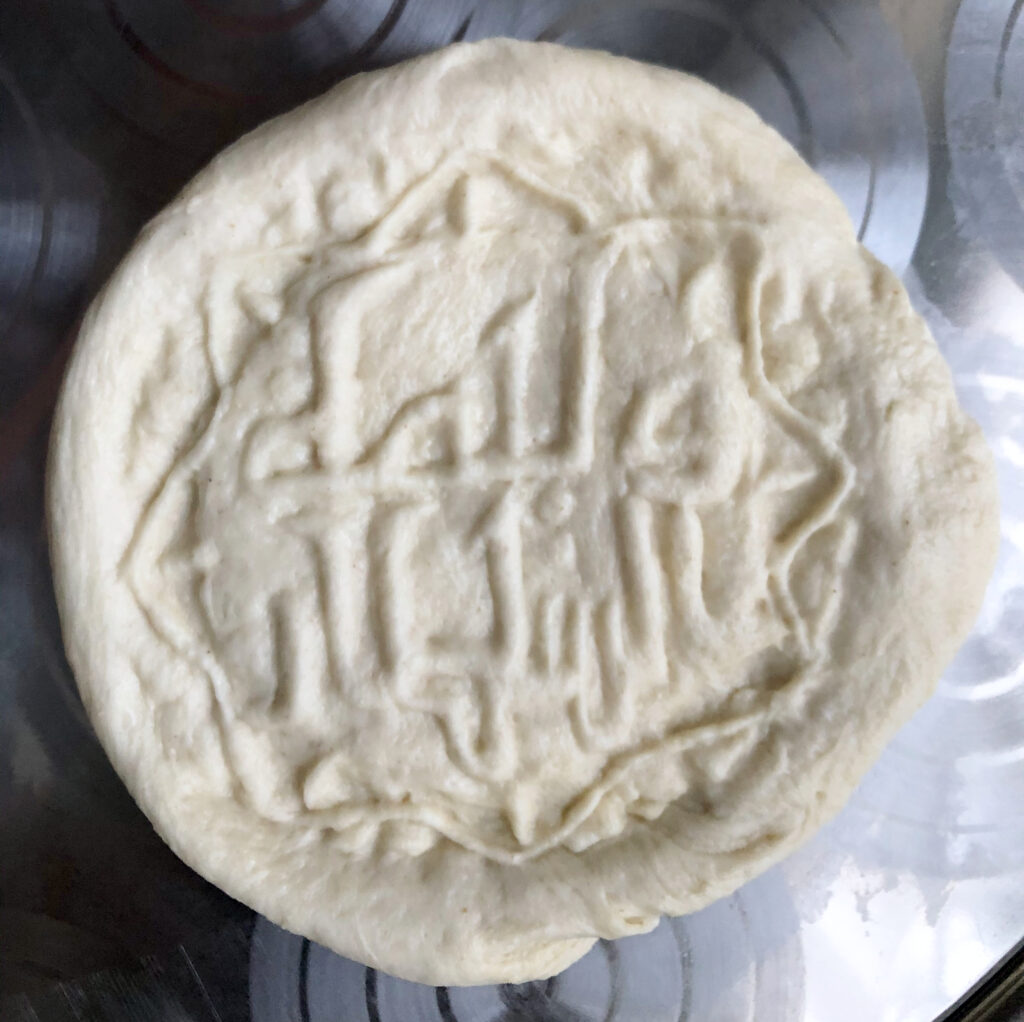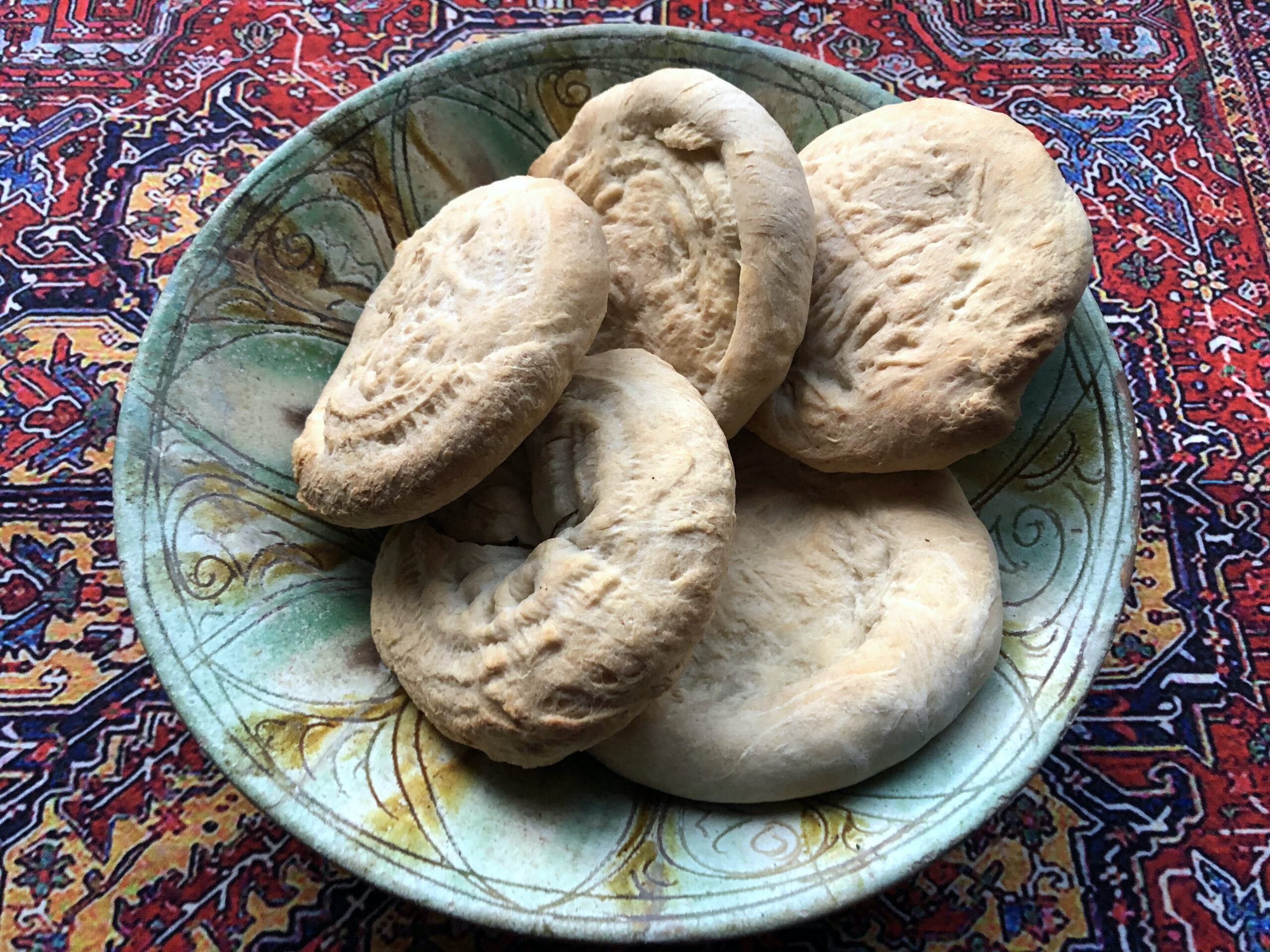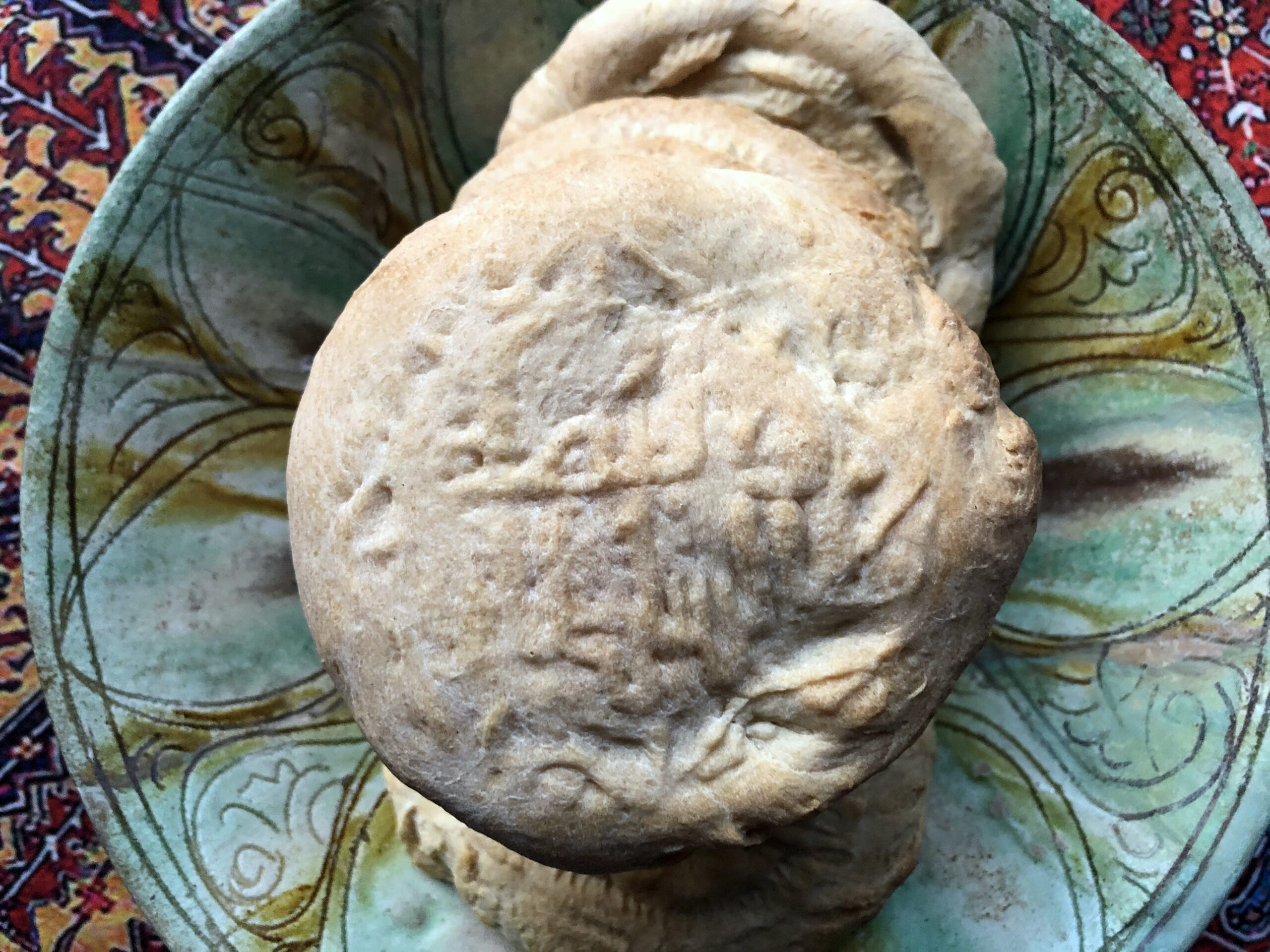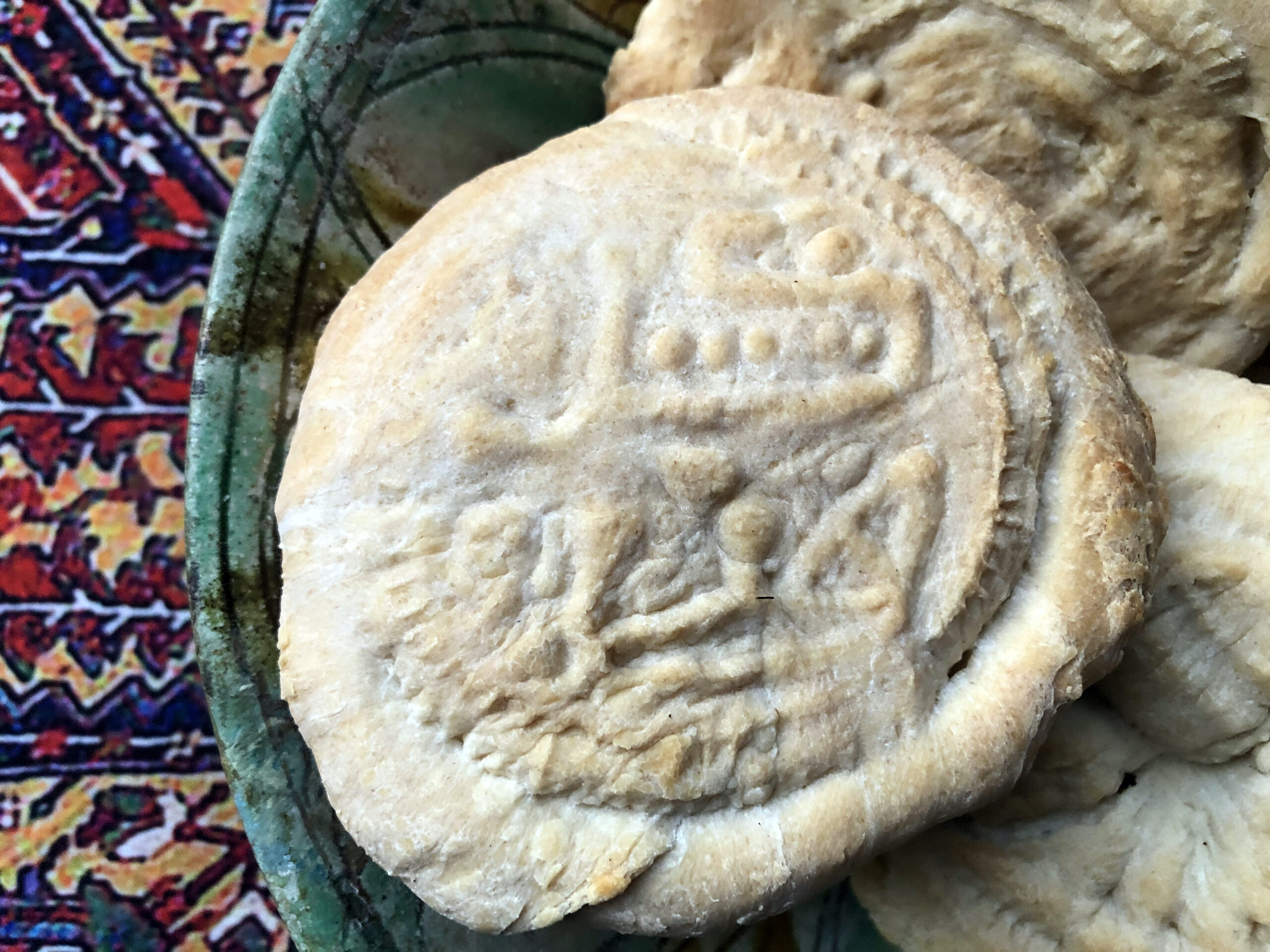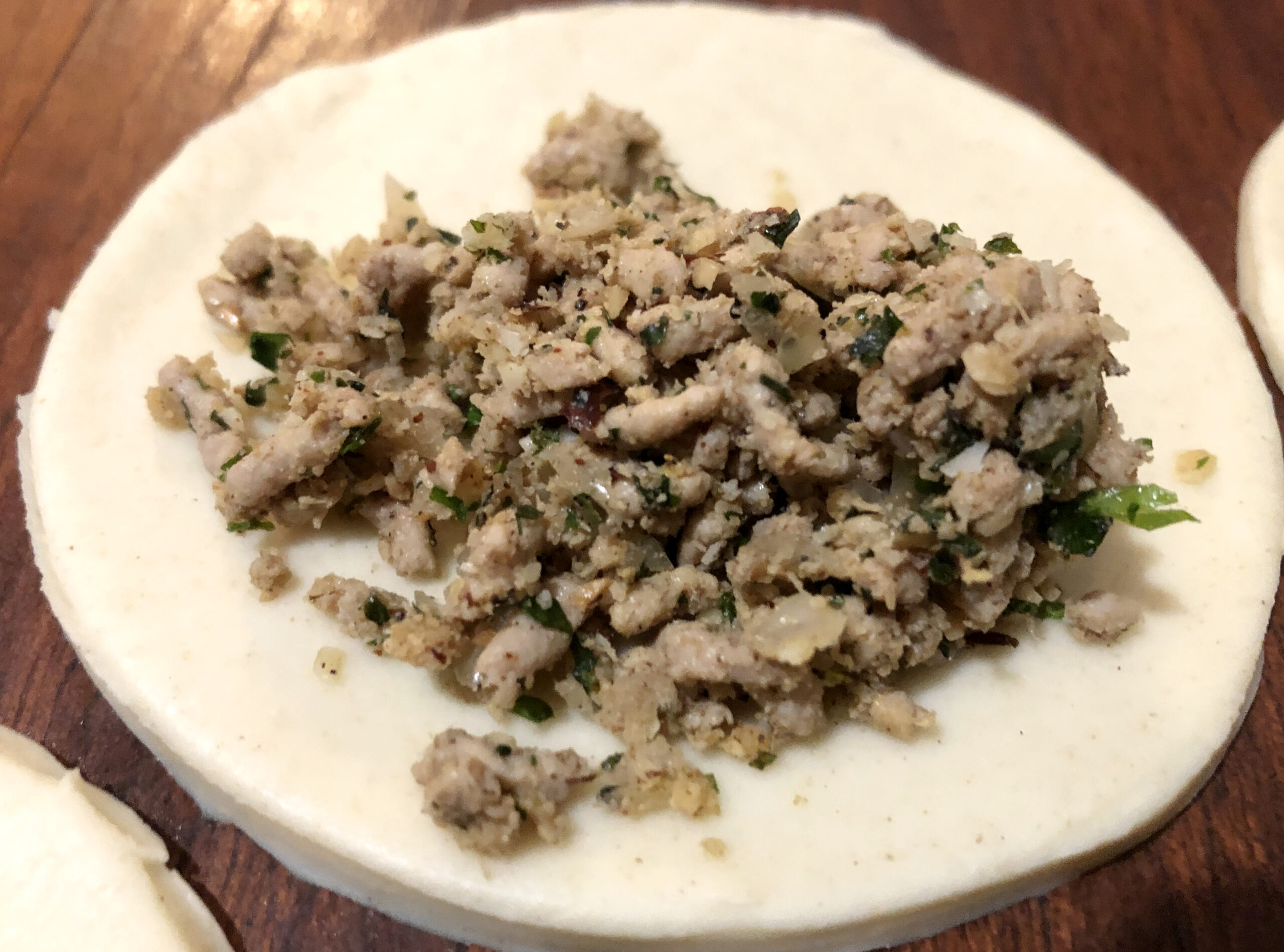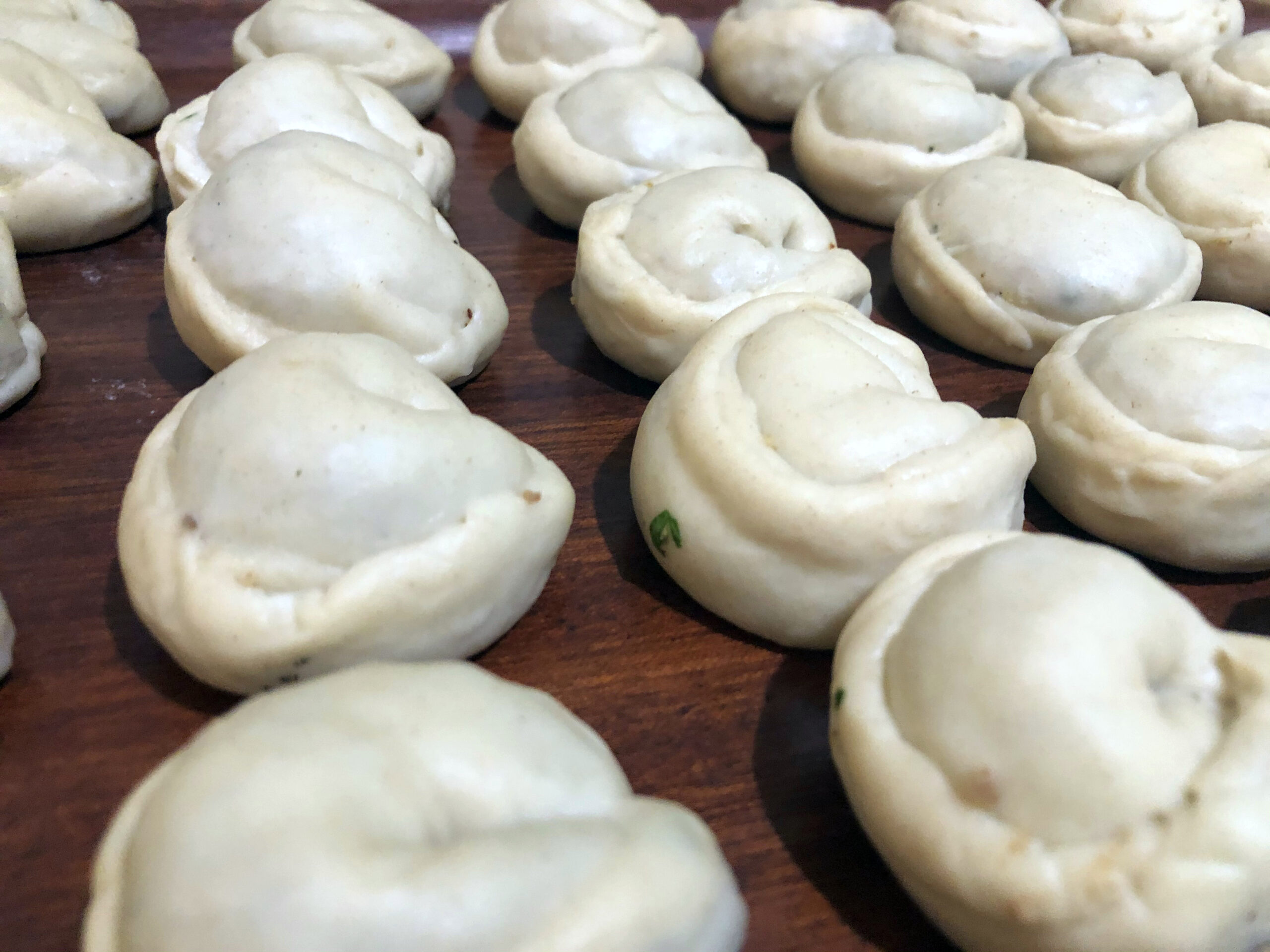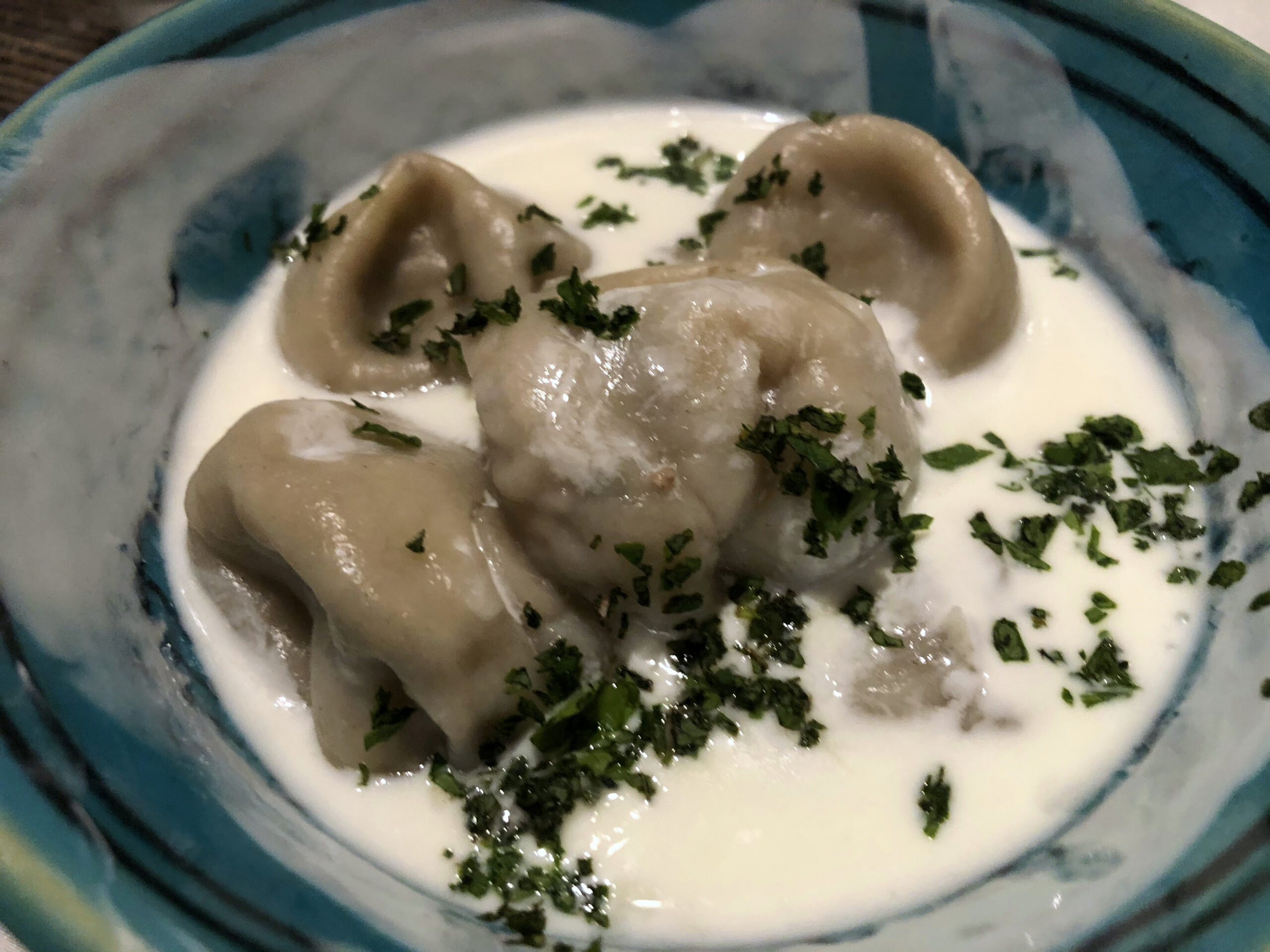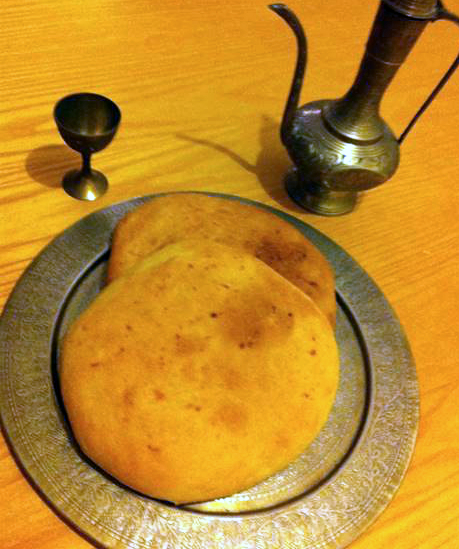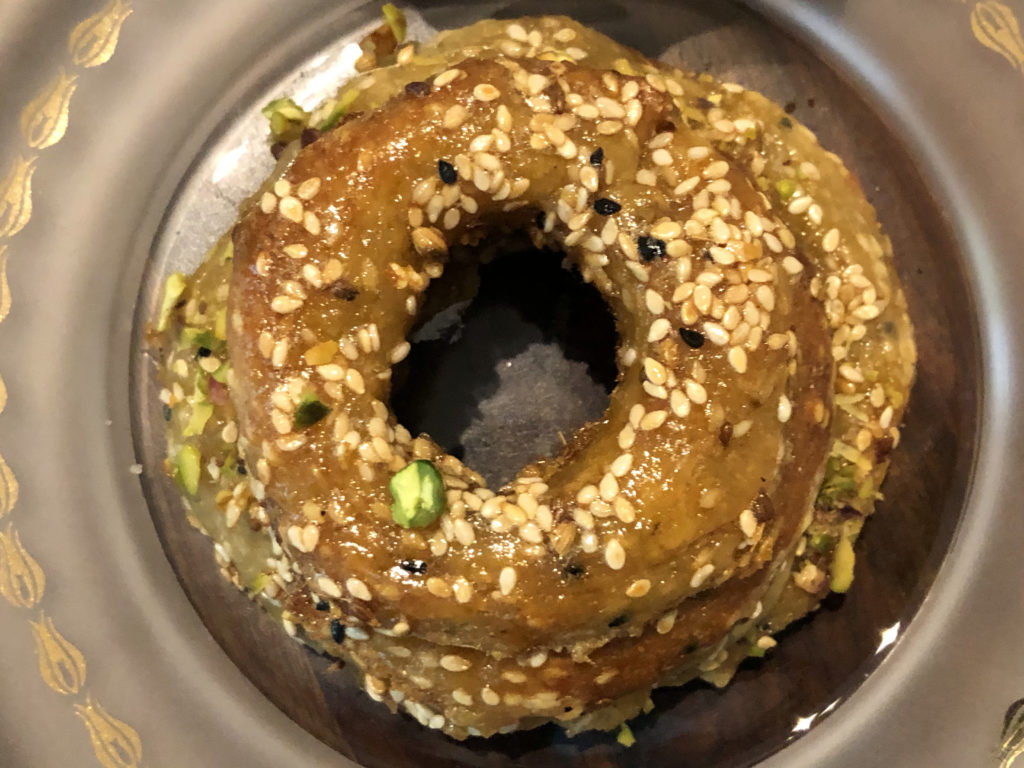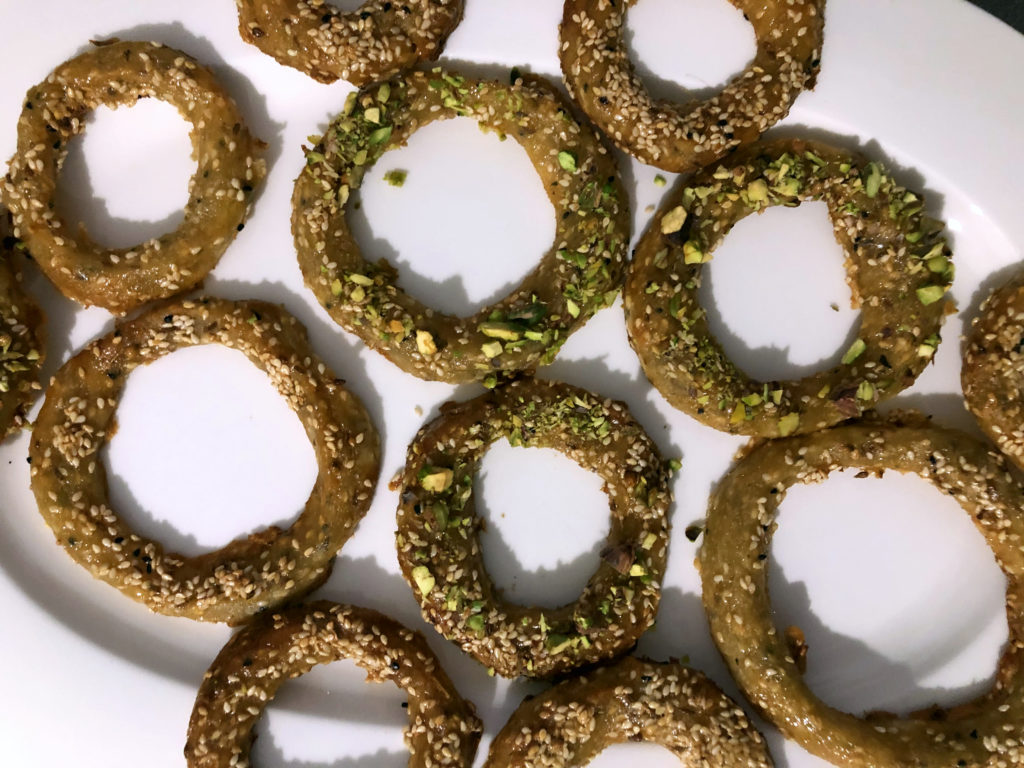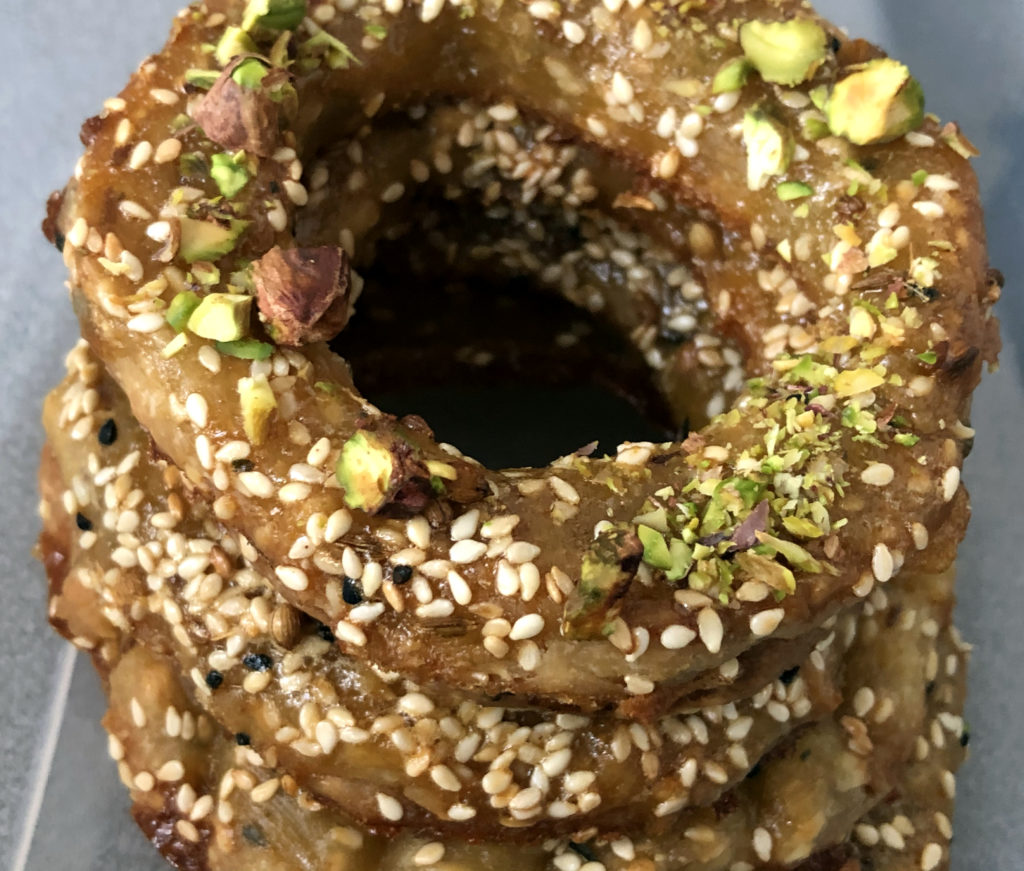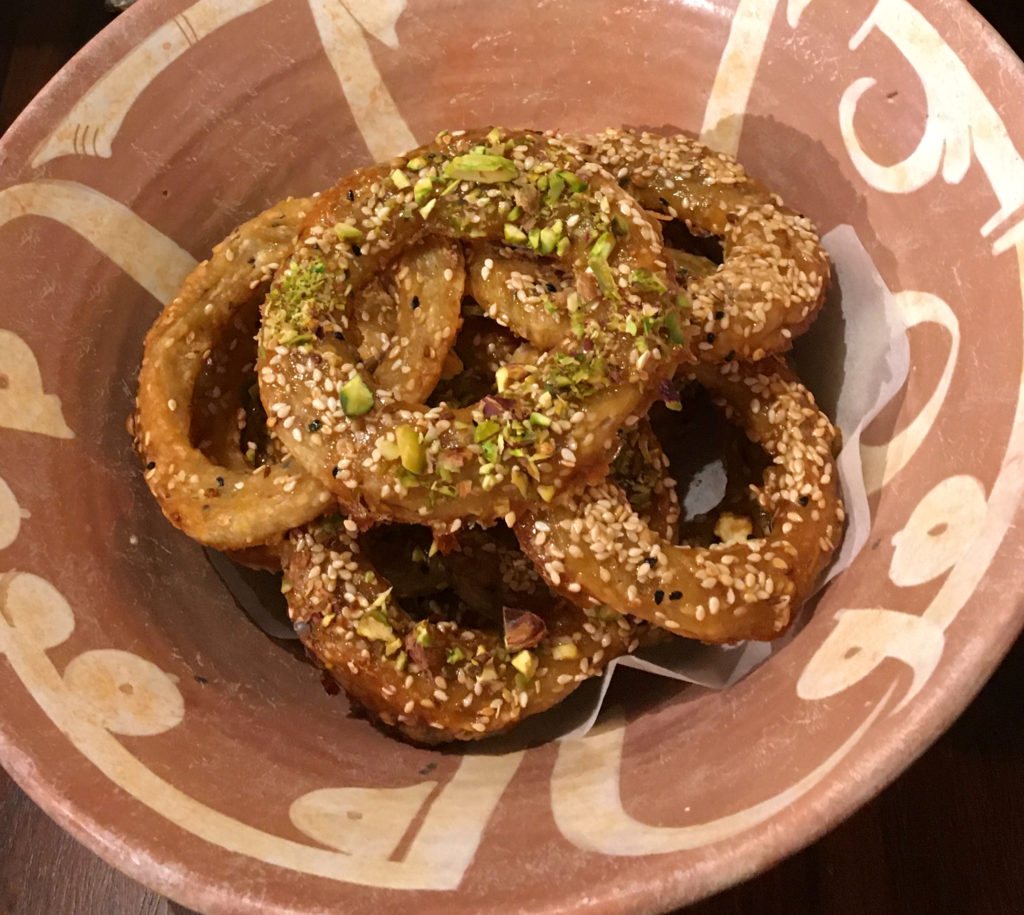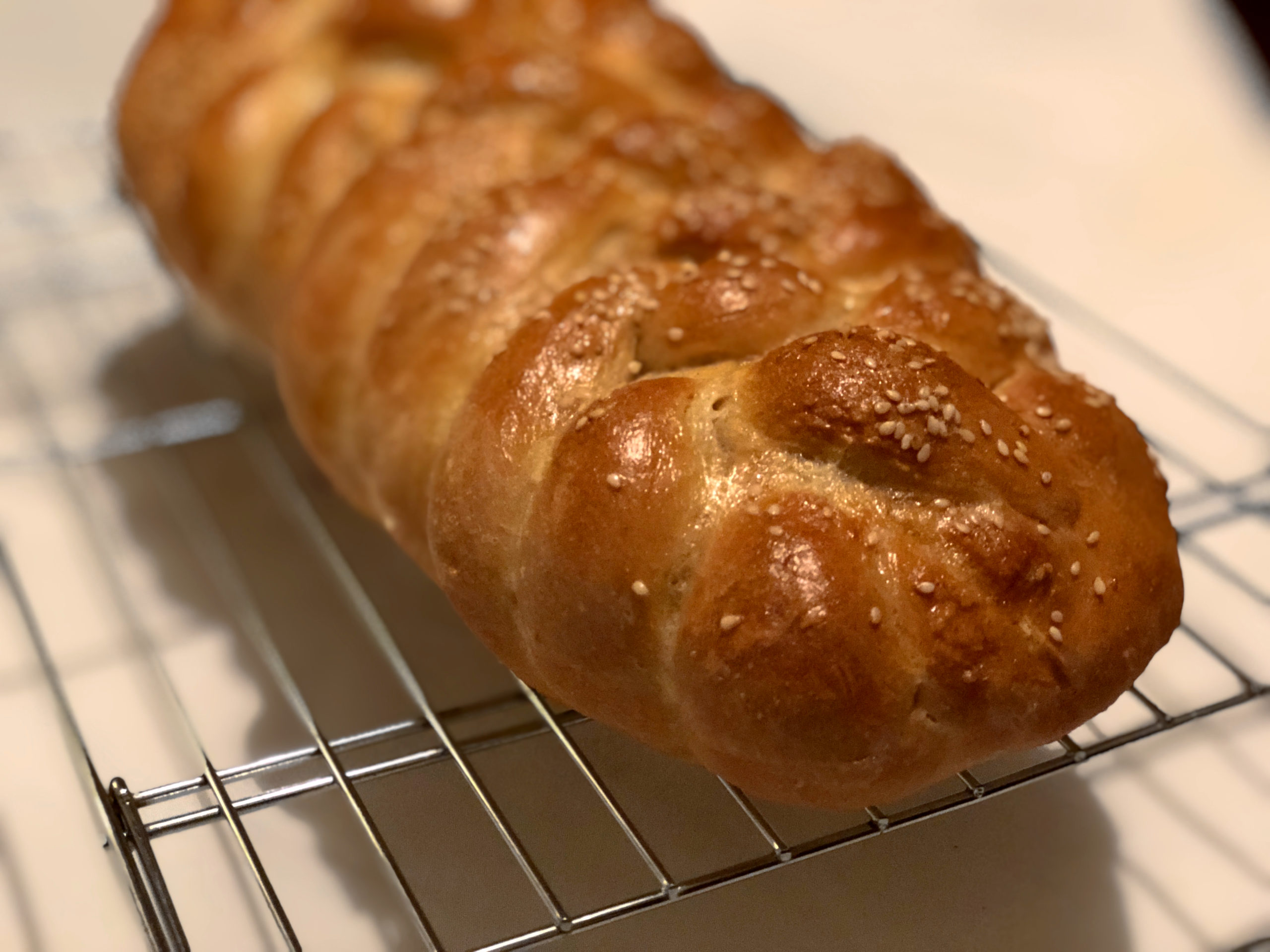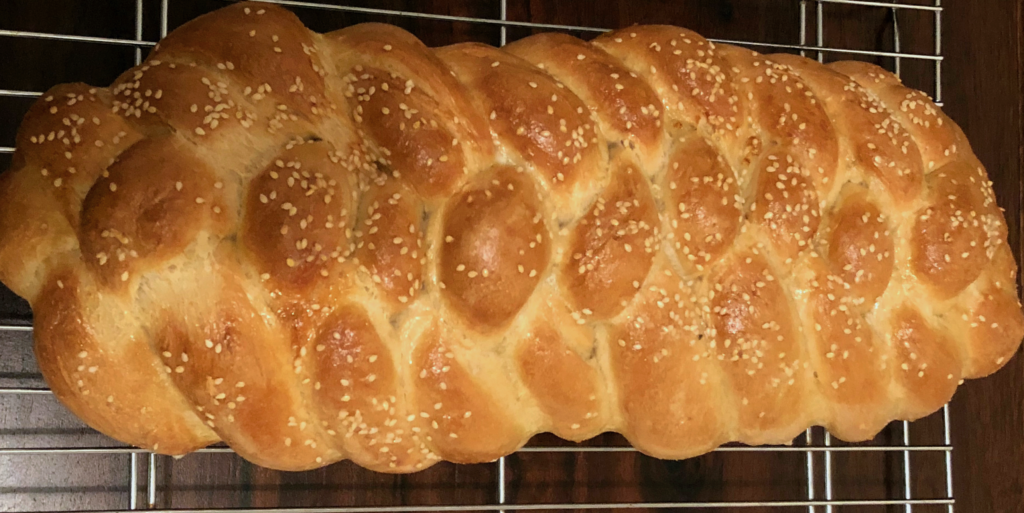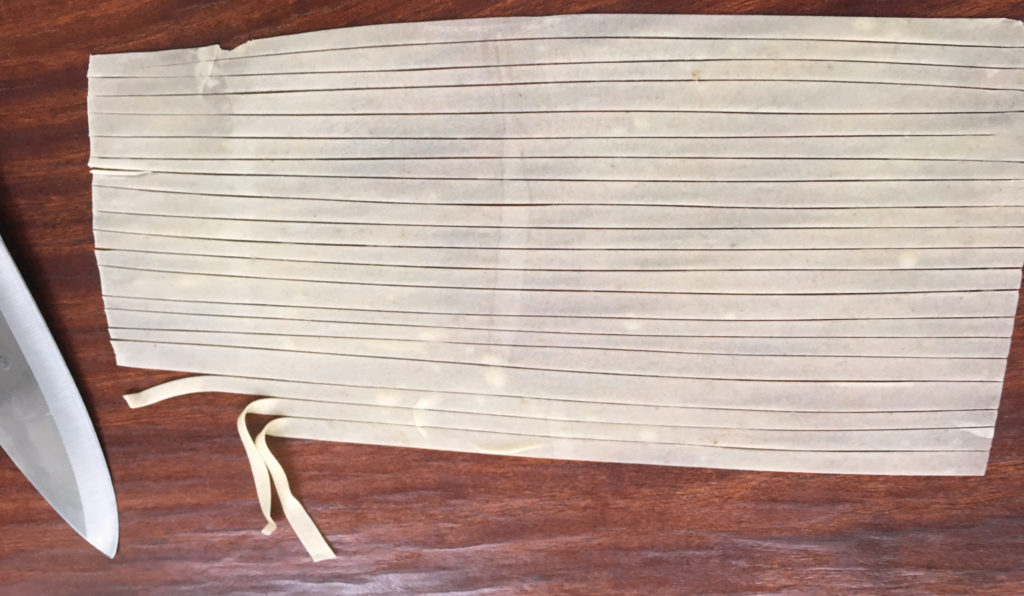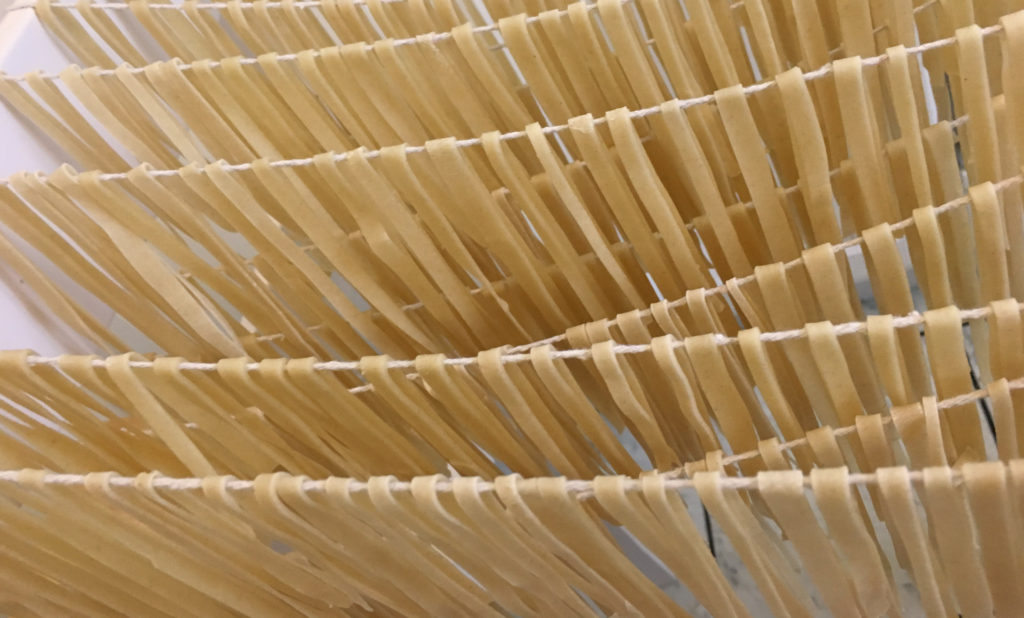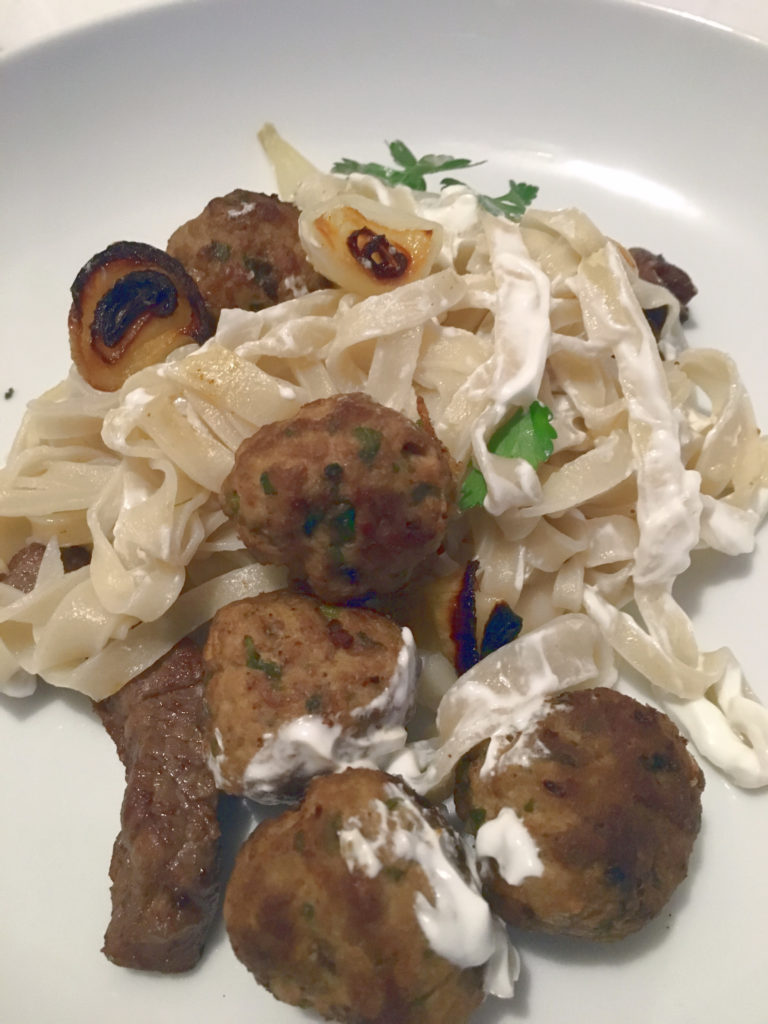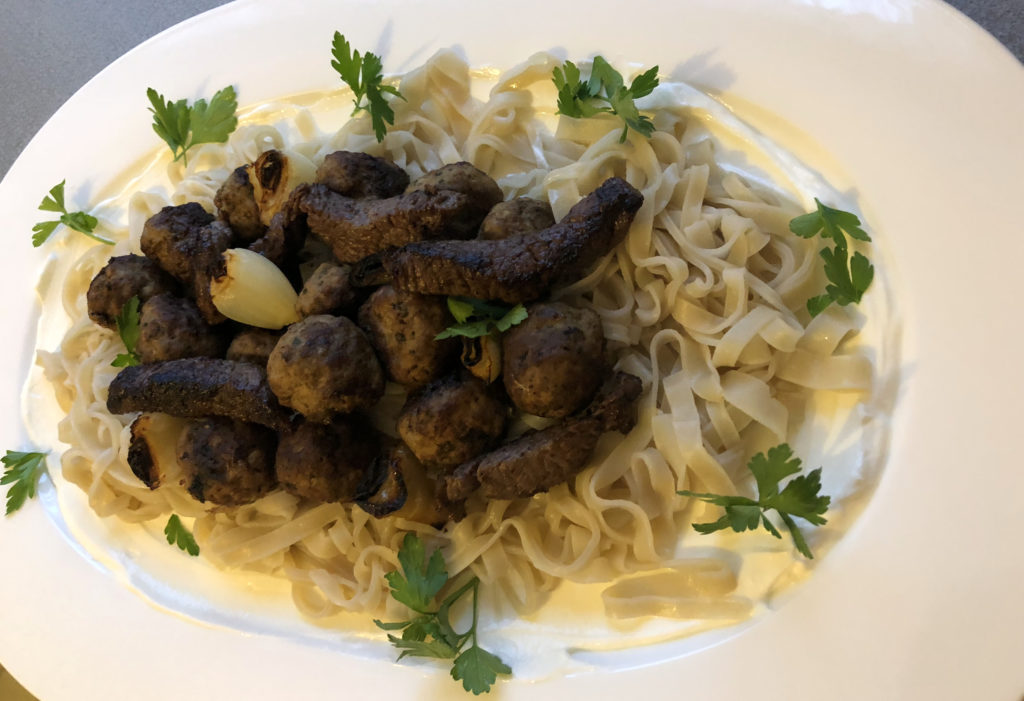This recipe from 13th-century Muslim Spain is a whimsical twist on a popular dish in that period and region, the isfiriyya (اسفريا), a kind of omelette. This particular variation is known as ‘counterfeit’ (مزوّرة, muzawwara), because it uses chickpea (gram) flour to make something that looks like isfiriyya. Gram flour is widely available now, but for the purists, this is how you can make it yourself from scratch (which is both cheaper and more fun, anyway!): pound chickpeas, remove the skins and grind. For the batter, add eggs and yeast, as well as some fennel seeds and other spices. The mixture is pan-fried into a thin cake, like a crepe. Serve with honey or a melted cheese mixture — an irresistable delicacy that will make you come back for seconds!
There is an interesting historical coda, as these pancakes appear to have received a second lease of life in Italy, where they are known as farinata, primarily associated with Liguria and Genoa, which is (wrongly!) credited as being its birthplace. It is also found in other Italian regions, under different names, like cecina (Tuscany), while along the French Riviera it appears as socca. Interestingly enough, its only modern avatar on the Iberian Peninsula is the national dish of Gibraltar, calentita.
